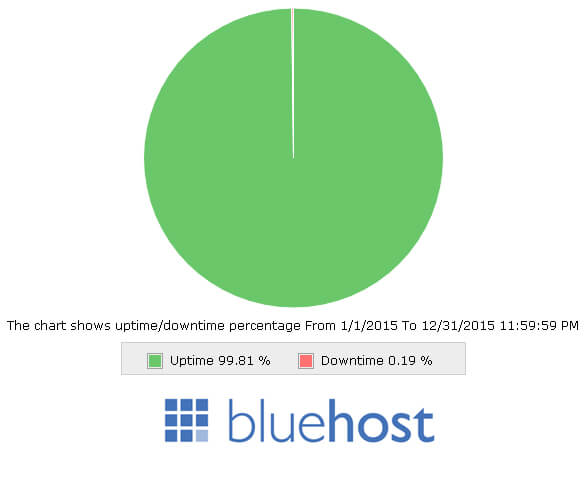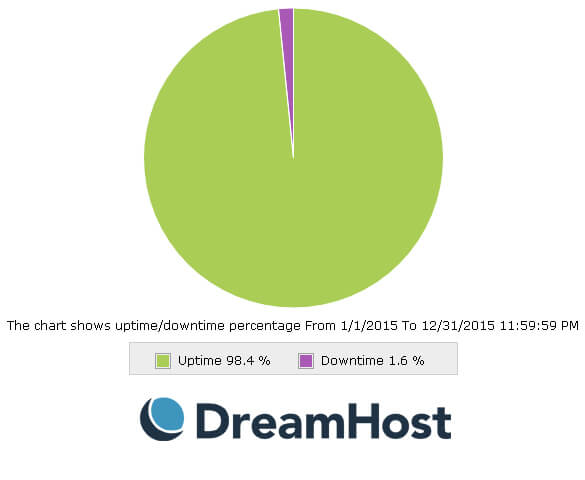Bluehostand DreamHostare 2 of one of the most widely known and highly regarded holding firms around. They each have a faithful following and numerous internet designers, online marketers and local business owner alike will vouch for one or the various other being an excellent host, yet that elevates the concern– which holding business (Bluehost or DreamHost) is in fact the king of capital?
To aid address this actual concern, we’ve proceeded and subjected each host to a selection of efficiency screening throughout 12 months to actually obtain some strong unbiased information. In addition to that, we’ve been producing specialist internet sites for greater than 15 years, so you’ll obtain our professional point of view on the topic.
What makes WebHostingBuddy various is that we will not, under any type of situations, suggest a host based upon the compensations that they use or a host that we do not have individual experience with. Among the greatest troubles in the host evaluations field is that numerous blog writers simply thoughtlessly press or “advise” whichever host pays one of the most in reference compensations despite their high quality, and we definitely despise that– we desired WebHostingBuddy to be various.
Keeping that claimed, if you do purchase from the web links on this web page, we might (not constantly) obtain a tiny compensation. This “kickback” from a holding business assists to maintain this website running and additionally to maintain the material readily available cost free. We can definitely ensure you that our suggestions remain in no chance affected by any type of compensations. If you require evidence of this, have a look at the Hosts We Don’t Likeweb page and you’ll see that several of them supply really high recommendation compensations, yet we inform individuals to prevent them.
Since we’ve obtained that off the beaten track, allow’s relocate onto checking out Bluehostvs DreamHostand identify that the very best remains in a neck and neck match!
DreamHost vs Bluehost: The Competition Categories
It’s a great concept, when doing any kind of sort of side-by-side contrast, to attempt and make the gauging stick as clear and as reasonable as feasible. To do this, we typically such as to utilize the exact same standards when contrasting 2 various hosts. We do this to make every one of the contrasts simple to equate from one to one more, and to give a clear picture of each host. For instance, if you wish to contrast Bluehost vs HostGator, and afterwards Bluehost vs DreamHost, you can do that on this site and it’s good to see that every one of the contrasts utilize the exact same basic standards.
There are basically 5 major classifications that we such as to check out when contrasting any type of 2 webhosting firms. These groups are:
- Web Performance/Server Speed
- Online Time (Uptime) vs Offline Time (Downtime)
- Service, Support, Ease of Getting Help
- Reduce of Use for the Interface (User-Friendliness)
- Pricing, Feature Bundles, Options, etc.It’s vital to
comprehend that these groups do not cover every feasible factor to consider when selecting a host or contrasting them, however our company believe that they do a great task in aiding to see just how to organizing business determine up versus each other. Bluehost and DreamHost– Web Performance/Server Speed Undoubtedly, the rate of a internet server and internet efficiency is among one of the most(otherwise one of the most)crucial aspect when selecting a webhosting. The fact is that individuals have actually concerned anticipate rate from a site. Gone are the days of 56K dial-up modems and waiting mins for a website to tons. Individuals currently anticipate a websites to tons immediately and will certainly quickly jump or click the back switch on their internet browsers if this does not take place. This implies that if you wish to have a great web site, it requires to be quick. In order for your internet site to be quickly, your internet server requires to be quick.
Certain, you can have a quick web server and a badly enhanced web site, yet if your web server isn’t quickly no matter just how well your web site is enhanced. This is specifically crucial in common holding settings where the most effective organizing business will certainly handle their sources quite possibly(like HostGator)and the poor firms will certainly not handle them well, which will certainly be right away obvious in the rate of their web servers and sites held on them. To place Bluehost and DreamHost to the examination, we configuration 2 WordPress sites that are likewise set up with the very same plugins, and really comparable web content. One was organized on Bluehost and the various other was held on DreamHost. We place each of these websites via the internet site rate examination at Dotcom-Tools. com utilizing their American information facilities. Each website was evaluated from a selection of places, and you can see the examination information in the photos listed below.
DreamHost versus Bluehost: Online Time (Uptime) vs Offline Time (Downtime)
There’s no situation where uptime isn’t one of the most important factors with respect to choosing a web host. The bottom line is that if your website is offline, no one can visit it—period. Imagine for a moment that you have an ecommerce website where you sell coffee. How many frustrated customers will you have (and potentially lose) if they can’t checkout, or your site goes offline while they’re trying to add items to their cart. If you’re a small company, it’s possible that your reputation may never recover—especially if the outage gets a lot of coverage on social media.

Even if you don’t have a business, downtime can still be a devastating thing. It can upset visitors and really damage your reputation, and also hurt your positioning in search engines. And if you aren’t actively monitoring your site, you may not even know that it’s down. With all that said, you can see how it’s important to understand the need for a good web host with a good uptime rating.
The industry standard measure for uptime is 99.9%, and this is what most webhosts adhere to. The document that governs how a host treats downtime is typically called a Service Level Agreement (SLA). This is document that most hosts have that specifies what you can expect in terms of uptime, and what they’ll do if the uptime falls below that.
In the case of Bluehost, they don’t specify an uptime percentage, which we’re not a fan of. They only say that it should be no more than 15 minutes for them to typically fix a problem which really isn’t saying much. DreamHost, on the other hand, has a 100% uptime SLA which is better. In the event of an outage though, they’ll only credit you for the downtime you experienced, not for an entire month of service like other hosts (such as HostGator).

To test Bluehost vs DreamHost in the area of uptime, we used Dotcom-Monitor to ping each server at 3 hours intervals for an entire year to see if the WordPress site hosted on it was up or down.
You can see pretty clearly that Bluehost had a 12 month uptime percentage of 99.81% while DreamHost had a 12 month uptime percentage of 98.4%. Both of these numbers are good, but Bluehost had better numbers here. While we like DreamHost’s SLA a bit better giving a specific number, we have to go with the hard numbers here and say the Bluehost in the area of online time (uptime) vs offline time (downtime).
Again, we don’t like Bluehost’s SLA because it doesn’t specify a specific number for uptime/downtime, but our own experience with Bluehost and DreamHost has been (aside from the hard numbers listed here) that Bluehost tends to have more reliable servers and better uptime in general. Some people who’ve used DreamHost extensively may have had a different experience, but we have typically tried to stay away from using DreamHost mainly because of their awful user interface which we try to avoid at all costs.

Click Here to Visit Bluehost
Service, Support, Ease of Getting Help
While speed and uptime might be the most important factors in choosing a host, support is right up there in terms of importance. If you can’t get help when you need it that can be very frustrating, especially if your site is down or there’s a problem with billing, etc.

When looking at both companies (Bluehost vs DreamHost), they each have fairly good support. Bluehost offers 24/7/365 support via chat, telephone, tickets, and email. DreamHost offers all the above except easy access to telephone support. They do have an option for a technician to call you back, but it’s buried among their other support options and gives the impression that they don’t really want to talk to customers on the phone or deal much with phone support at all.
Support is a relatively subjective category, but our support experience has been much better over the years with Bluehost compared to DreamHost. We’ve found that DreamHost chat support is frequently offline and Bluehost chat is always online, but sometimes the wait times (especially during peak hours) are too long in our opinion.
Based on the fact that Bluehost offers easier access to telephone support and their chat is more accessible (in our experience), we have to give the win to Bluehost in this category.
Ease of Use for the Interface (User-Friendliness): Bluehost/DreamHost
Another important trait of a good web host is having a good user interface in order to control and operate the server. The industry standard is cPanel and it’s what most web hosting companies use. It’s slick, very user-friendly, and easy to use with very little experience. Most web hosts use cPanel either with the default layout/UI or they put their own custom layout on top of cPanel (this is what Bluehost and other hosts such as HostGator do).

Unfortunately, this is one area where we really have to call out DreamHost and tell it like it is (we always do anyway). Their user interface is absolutely terrible, almost to the point of being unusable. For some reason, they don’t use cPanel and decided to have a custom interface. This isn’t always a bad thing per se, but their interface is clunky, confusing, and outdated-looking. It’s really one of the main reasons why we don’t use DreamHost for any new sites unless we have an older site sitting on their servers.
If we have a client or business that’s hosted on DreamHost and we have to move their site to a new server it’s an absolute nightmare. We also, at this point, refuse to migrate sites to DreamHost because the process of setting up FTP account and SQL databases is so confusing and silly it’s not even worth the effort. We don’t know how much else we can say here, but we’re 100% sure that DreamHost fails big in this category. If you do some searching online, you’ll find other people who complain about this as well. It’s really their biggest downside, and because of that (although this is a subjective but honest and thorough opinion) we have to say that Bluehost wins this category, and they win big.

Click Here to Visit Bluehost
Pricing, Feature Bundles & Options
In the hosting world, pricing can be all over the place due to a variety of factors. Here are some of those factors:
- Coupons—available from a number of sources for many different hosts. They often create a steep initial discount that doesn’t renew.
- Promotions—hosts will often run promotions on almost any holiday (St. Patrick’s Day, Columbus Day, whatever really).
- Renewal rates—these rates vary significantly compared to the initial signup prices. Some hosts will negotiate on these where others will not budge.
- Recurring discounts—some hosts will offer recurring discounts for referring other customers.
- Plan pricing/feature changes—hosts are notorious for continually adjusting pricing in a number of ways and all throughout the season, which can make it hard to keep track of prices.
All of these factors can dramatically affect pricing, so it can be hard to compare two hosts based on pricing and features because they may change at any given time. Really, all that can be done is to take a snapshot at a specific point in time and compare then because things may change at any time in the future.

Looking at DreamHost at the time of writing, they have very straightforward pricing for their shared hosting. If you pay monthly, it’s $10.95/month, yearly it works out to $9.95/month, and triennially it works out to $7.95/month.
Bluehost has a more confusing pricing structure, because if you sign up for 3 years at once, it works out to be $3.45/month for their lowest-priced shared hosting plan. Bluehost does not allow you to pay monthly and their cheapest plan works out to be $5.95/month for shared hosting if you pay for 12 months at once, and $4.95/month if you pay for 24 months up front.
DreamHost does offer unlimited domains and more unlimited things on their shared hosting plan (they only offer one plan), but they are a bit more expensive on the initial cost. Renewal rates can vary so much between the hosts it’s really hard to say.
Because generic hosting (Linux shared) has become so commoditized—it’s really a tie between Bluehost and DreamHost in the pricing and features category—it’s really too close between these hosts to call.
